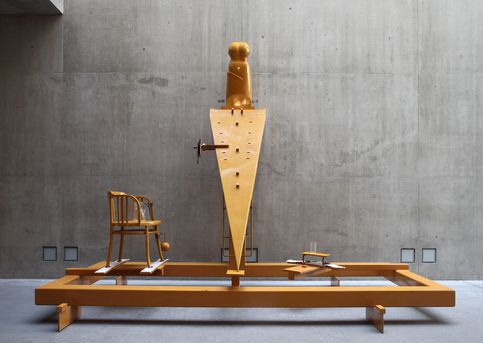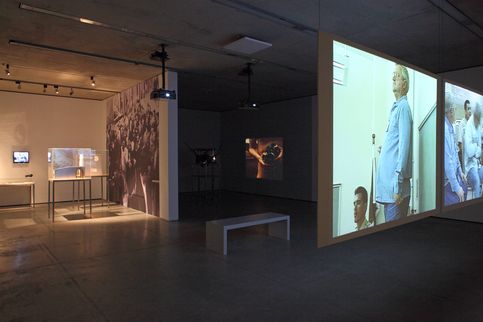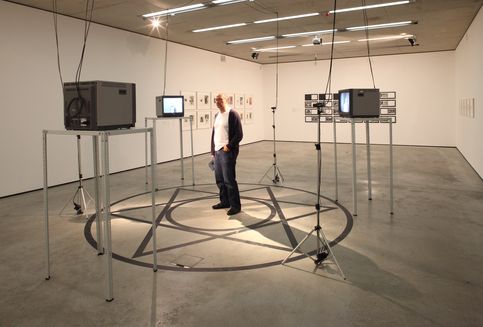Proudly Presenting: Generali Foundation Collection
Curators: Sabine Breitwieser, Director, with Christina Penetsdorfer, Assistant Curator, Museum der Moderne Salzburg
Venue: Museum der Moderne Salzburg, Mönchsberg
The first exclusive presentation of the Generali Foundation Collection at the Museum der Moderne Salzburg provided insight into some of the characteristics of this well-known collection.
At the beginning of 2014, the internationally acclaimed collection of the Generali Foundation of around 2,100 works by 130 artists was entrusted to the Museum der Moderne Salzburg on permanent loan. One central theme-based group of works comprises objects in which art, design, and architecture merge to shape but also articulate a critique of utopian ideas. Bruno Gironcoli’s phallic sculptures, Dan Graham’s glass pavilions, Hans Hollein’s Mobile Office (1969), Gordon Matta-Clark’s interventions in abandoned buildings, and Walter Pichler’s TV-Helmet (1967) have meanwhile become icons of this subject. The high expectations in new technologies and media since the 1960s have also flowed into numerous works that examine their effects on people. The “feminist-actionist” and “expanded-cinema”-works by VALIE EXPORT, especially her TAPP- und TASTKINO (Tap and Touch Cinema) (1968) and Harun Farocki’s video installations tackle some of these issues in profound groups of works. Works by the younger generation of artists have also contributed to a discussion of this topic from a current perspective. A number of works in the collection contain—to quote the artist and writer Allan Sekula—“photography against the grain” in conjunction with a media critique, such as Sanja Iveković’s photo collages, Martha Rosler’s photo-text-installation about the Bowery in New York, and Sekula’s cinematic photo essays. Years ago, headlines proclaimed the Generali Foundation an “Institution for Institutional Critique.” The collection does actually contain numerous artists whose works focus on the conditions of art, and ask what we actually want from art. Early on in his Condensation Cube (1965) Hans Haacke made visible how visitors have an impact on an artwork. Adrian Piper negotiates hegemonies and stereotypes in the art world, and Andrea Fraser humorously introduces us to the real life going on in a museum in the course of performances as “museum tours.”
With this exhibition, the Museum der Moderne Salzburg set the pretext for a new rotating collection exhibition in which works from the Generali Foundation Collection entered into dialogue with the museum’s other extensive holdings—from the museum’s own works to the photo collection of the federal government of Austria and the FOTOGRAFIS collection of Bank Austria Unicredit to the MAP collection.




